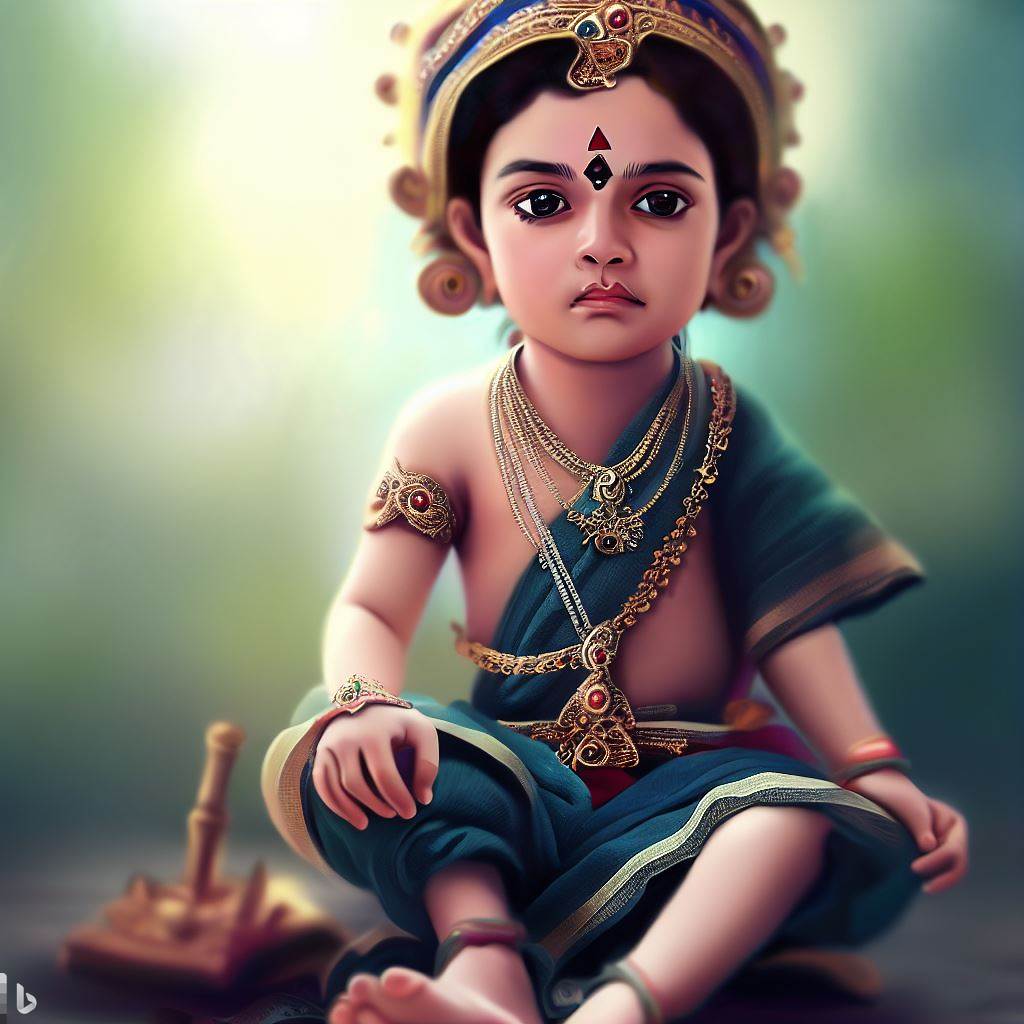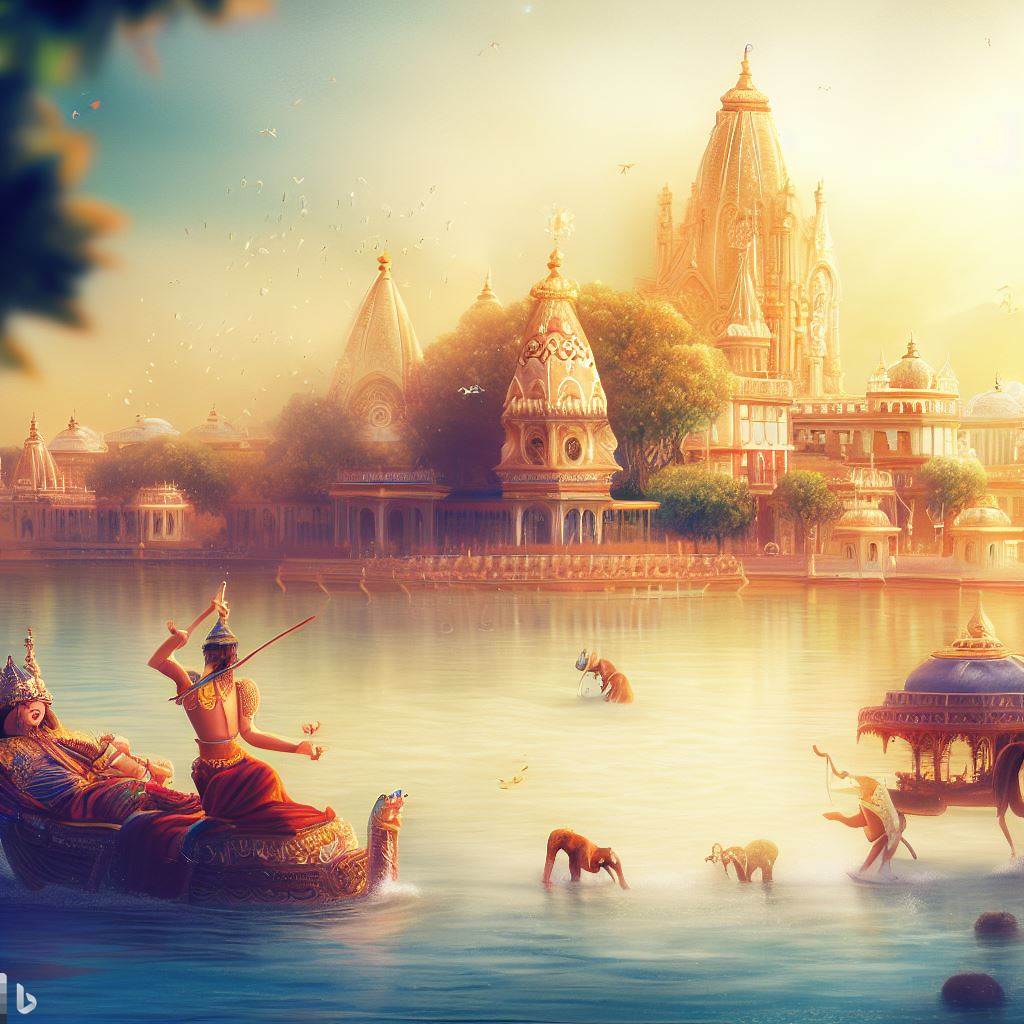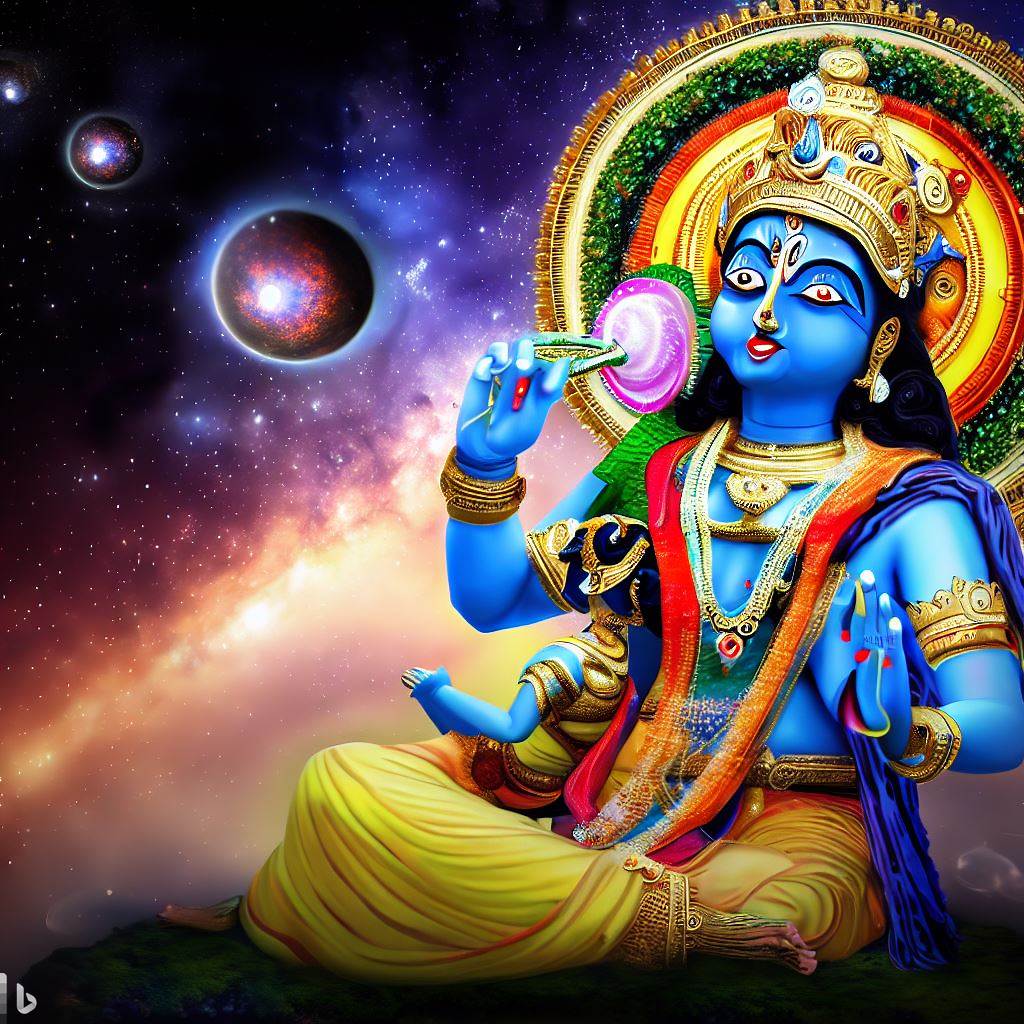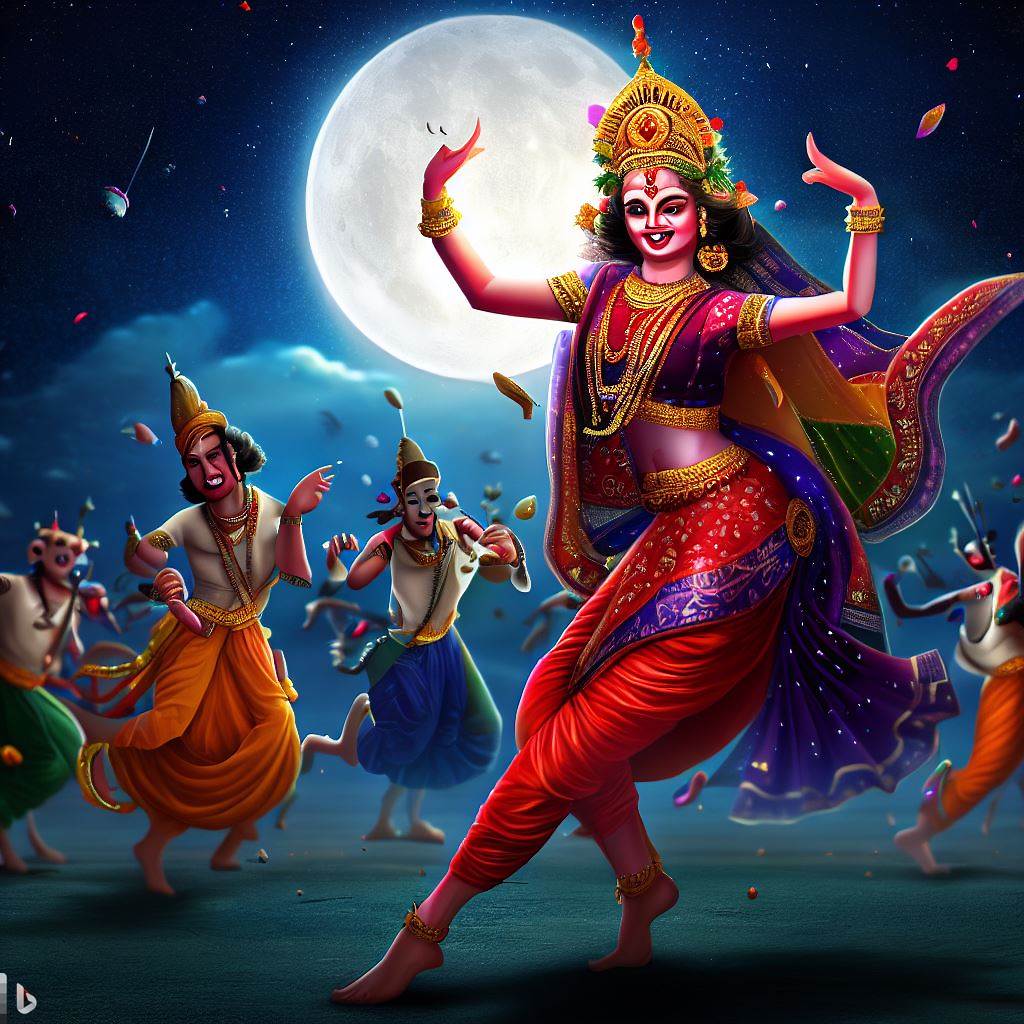Introduction | Janmashtami
Janmashtami is a joyous Hindu festival celebrated with immense enthusiasm and devotion across the globe. The festival commemorates the birth of Lord Krishna, an incarnation of the Hindu deity Vishnu. With its rich historical and mythological origins, Janmashtami holds a significant place in Hindu mythology and is a time of deep spiritual reflection and celebration.

Background on Janmashtami festival and its significance
Janmashtami, often referred to as Krishna Janmashtami is an annual festival celebrated in honor of Lord Krishna’s birth. It is observed on the eighth day of the dark fortnight in the month of Bhadrapada (August-September) according to the Hindu lunar calendar. The festival symbolizes the victory of good over evil and is an opportunity for devotees to reconnect with their spiritual essence.
Historical and mythological origins of Janmashtami
The origins of Janmashtami can be traced back to ancient times when the festival found its roots in the tales of Lord Krishna’s divine presence on Earth. According to Hindu scriptures, Lord Krishna was born over 5,000 years ago in Mathura, a city in present-day Uttar Pradesh, India. His birth was a celestial event that brought hope and enlightenment to humanity.
The Life of Lord Krishna
Lord Krishna’s birth in Mathura
The divine birth of Lord Krishna took place in the holy city of Mathura, in the chambers of King Kansa’s prison. The devoutly worshipped deity appeared to his parents, Vasudeva and Devaki, in a resplendent form, urging them to fulfill their destined roles in his incarnation.
Childhood adventures and miracles of Lord Krishna
Lord Krishna’s childhood was replete with divine adventures and miracles that captivated the hearts of all who encountered him. From defeating demons to stealing butter, he displayed his divine nature while engaging in playful antics that endeared him to his devotees.
Krishna’s divine teachings in the Bhagavad Gita
One of Lord Krishna’s most profound contributions to humanity is the Bhagavad Gita, a sacred scripture within the epic Mahabharata. In this philosophical dialogue with Prince Arjuna, Krishna imparts timeless wisdom on duty, righteousness, and the path to self-realization.
Krishna’s role as a charioteer in the Mahabharata war
Lord Krishna played a pivotal role as the charioteer of Arjuna during the great Kurukshetra War, narrated in the Mahabharata. He served as a guide and counselor, imparting invaluable teachings about duty, morality, and the transient nature of life.

Significance and Customs of Janmashtami
Celebration of Krishna’s birth across the globe
Janmashtami is celebrated with great fervor not only in India but across the world. Devotees come together in temples, homes, and community centers to partake in various rituals, prayers, and cultural events, creating a global tapestry of devotion and joy.
Fasting and its importance during Janmashtami
Fasting holds a significant role during Janmashtami, where devotees abstain from consuming food or water until midnight, the auspicious moment of Lord Krishna’s birth. Fasting is seen as a means to purify the mind and body while deepening one’s connection with the divine.
Preparations and decorations for the festival
In the lead-up to Janmashtami, devotees engage in elaborate preparations and decorations. Temples and homes are adorned with vibrant flowers, colorful rangoli (art), and beautifully dressed idols of Lord Krishna, creating an ambiance of divinity.
Traditional clothes and ornaments worn on Janmashtami
During Janmashtami, devotees proudly deck themselves in traditional attire. Men often wear dhoti-kurta, while women adorn themselves in exquisite sarees or lehengas. Traditional jewelry, such as the flute-shaped earrings known as murali or bansuri, add an enchanting touch to the festivities.

The Smashan Leela – Krishna’s Midnight Dance
The enchanting stories behind the Smashan Leela
One of the most captivating elements of Janmashtami is the Smashan Leela, where devotees reenact Krishna’s mystical midnight dance on the cremation grounds. This tradition is inspired by tales of Lord Krishna’s divine playfulness among the gopis (cowherd girls) of Vrindavan.
The symbolic meaning of Krishna’s dance
Krishna’s dance symbolizes the eternal dance of creation and destruction. It represents the cyclical nature of life, portraying Krishna as the ultimate performer, orchestrating the cosmic symphony with grace and harmony.
Rituals and preparations for Krishna’s midnight dance
In anticipation of Krishna’s midnight dance, devotees meticulously prepare the dance area, adorning it with flowers, lights, and sacred symbols. They fervently chant devotional songs, awaiting the moment when their souls can merge with Krishna’s divine energy.

Dahi Handi: Breaking the Pot of Butter
Origins of the Dahi Handi tradition
Dahi Handi, a popular traditional activity during Janmashtami, is rooted in the mischievous nature of Lord Krishna as a child. The tradition originated from his love for butter, which he playfully stole from the hanging pots in his village.
The significance of the pot of butter and its connection to Krishna
The pot of butter symbolizes the human heart, the vessel through which true devotion and love flow. Krishna’s desire to taste the butter emphasizes the importance of surrendering our hearts to the divine and experiencing the sweetness of a spiritual connection.
Exciting activities and competitions during Dahi Handi celebrations
Dahi Handi celebrations involve forming human pyramids where participants known as Govinda climb on top of each other to break a suspended clay pot filled with curd. This exhilarating activity portrays teamwork, strength, and the triumph of unity in reaching the divine.
Social and cultural impact of Dahi Handi on communities
Dahi Handi celebrations foster a sense of camaraderie and unity within communities. People from different backgrounds come together in a spirit of joy and cooperation, reinforcing the principles of harmony and togetherness embedded in the teachings of Lord Krishna.
Music, Dance, and Drama: Showcasing Krishna’s Life
Traditional folk performances depicting episodes from Krishna’s life
The vibrant cultural tapestry of Janmashtami comes alive through traditional folk performances that depict significant episodes from Lord Krishna’s life. These performances, infused with music, dance, and drama, transport the audience into the mystical and enchanting world of Krishna.
Classical dance forms associated with Krishna, such as Kathak and Odissi
Classical dance forms like Kathak and Odissi have long been associated with Krishna’s divine persona. The intricate footwork, graceful movements, and expressive storytelling of these dances serve as a fitting tribute to the charismatic and playful nature of Lord Krishna.
Devotional songs and bhajans sung during Janmashtami
Devotional songs and bhajans dedicated to Lord Krishna are an integral part of Janmashtami celebrations. These soul-stirring melodies, sung in various regional languages, express the depth of devotion and love evoked by Krishna’s divine presence.
Krishna Temples: Magnificent Abodes of Devotion
Famous Krishna temples in India and around the world
Krishna temples stand as magnificent abodes of devotion, attracting millions of devotees from all walks of life. Temples such as the Banke Bihari Temple in Vrindavan, the Iskcon Temple in Mayapur, and the Guruvayur Temple in Kerala are renowned for their grandeur and spiritual energy.
The architectural beauty and spiritual significance of these temples
The architecture of Krishna temples showcases intricate craftsmanship and divine aesthetics. From the towering gopurams (entrance towers) to the serene sanctums, these temples embody the essence of Krishna’s divine presence and offer devotees a sacred space for worship and reflection.
Pilgrimage and the importance of visiting Krishna temples on Janmashtami
Taking a pilgrimage to Krishna temples during Janmashtami is considered a deeply auspicious endeavor. It allows devotees to immerse themselves in the spiritual energy of the temple, seek the blessings of the deity, and experience a sense of oneness with Krishna’s divine grace.
Krishna’s Favorite Food: A Journey through Flavors
Exploring the delicacies associated with Krishna’s love for food
Lord Krishna, known for his fondness for delectable food, has an array of sumptuous dishes associated with his name. From steaming-hot kheer (rice pudding) to mouthwatering buttery treats like makhan mishri and khoya peda, the flavors of Krishna’s favorite food awaken the senses.
Influence of Krishna’s childhood and stories on traditional recipes
The stories and childhood tales of Lord Krishna have greatly influenced traditional recipes passed down through generations. Delicacies like Krishna’s favorite makhan mishri (butter and sugar) and poha (flattened rice) pay homage to the culinary delights relished by him in Vrindavan.
Sharing delicious recipes for Janmashtami festivities
To enhance the Janmashtami festivities, here are two delightful recipes that celebrate Krishna’s love for food: Kheer, a creamy rice pudding enriched with aromatic spices, and Methi Mathri, a savory pastry made with fenugreek leaves and spices. These recipes are sure to add a flavorful touch to your celebrations.
Devotional Practices and Japa Meditation
Chanting the Hare Krishna mantra and its benefits
Devotees deeply engage in the practice of Japa meditation, where they chant the Hare Krishna mantra, which consists of sacred names of the divine: Hare Krishna, Hare Krishna, Krishna Krishna, Hare Hare, Hare Rama, Hare Rama, Rama Rama, Hare Hare. Chanting this mantra is believed to purify the mind, awaken spiritual consciousness, and cultivate a deep connection with Krishna’s divine energy.
The power of Japa meditation and its role in spiritual enlightenment
Japa meditation is a powerful tool for spiritual enlightenment, allowing individuals to transcend the material realm and enter a state of pure consciousness. Through the repetition of the divine names, devotees experience a sense of inner peace, surrender, and unity with the divine.
Practicing devotion and surrender to Krishna’s teachings
Janmashtami serves as a reminder to devotees to embody the qualities of devotion, love, and surrender to Krishna’s teachings in their daily lives. By living with compassion, humility, and integrity, one can nurture a deep connection with Krishna and align their actions with the divine purpose.
Janmashtami Across Cultures and Generations
Importance of Janmashtami in various cultures and countries
While Janmashtami is rooted in Hinduism, its significance extends beyond religious boundaries. Various cultures and countries embrace the spirit of Janmashtami, appreciating the universal values of love, unity, and spirituality that Lord Krishna represents.
How the festival has evolved and adapted over time
Throughout history, Janmashtami has evolved and adapted to the socio-cultural milieu of different regions. This festival has become a melting pot of multicultural celebrations, where diverse customs and traditions blend harmoniously, showcasing the timeless appeal of Lord Krishna’s message.
Janmashtami celebrations for children and families
Janmashtami is an enchanting festival for children and families, as it offers a unique opportunity to introduce them to the captivating stories, playful adventures, and divine teachings of Lord Krishna. Children participate in dress-up events, engage in storytelling sessions, and bring Krishna’s enchanting spirit to life through various artistic activities.
Science and Spirituality: Krishna’s Relevance Today
Krishna’s teachings and their relevance in the modern world
Krishna’s teachings hold immense relevance in the modern world, where individuals strive for harmony, purpose, and spiritual fulfillment. His messages of non-violence (ahimsa), love, compassion, and self-realization are timeless and can guide individuals toward leading meaningful and fulfilled lives.
Scientific and philosophical interpretations of Krishna’s concepts
Contemporary thinkers have explored the scientific and philosophical aspects of Krishna’s teachings. Concepts like the interconnectedness of all lives, the power of consciousness, and the integration of spirituality and science have led to thought-provoking dialogues, bridging the gap between ancient wisdom and modern understanding.
Ahimsa (non-violence), love, and compassion as key messages from Krishna
Krishna’s emphasis on non-violence, love, and compassion resonates deeply in today’s world, where conflicts and divisiveness prevail. By embracing these teachings, individuals can foster peace, harmony, and understanding, leading to a more compassionate and inclusive society.
Conclusion
Janmashtami, the celebration of Lord Krishna’s birth, holds a profound significance in Hindu mythology and serves as a timeless reminder of divine love, wisdom, and spiritual growth. By immersing ourselves in the spirit of Krishna, we can ignite our souls, deepen our connection with the divine, and embark on a journey of self-realization. May the enchanting stories, celestial music, and teachings of Lord Krishna inspire us to embrace his divine presence in our lives and foster a world filled with love, compassion, and spiritual enlightenment.


Fatal error: Allowed memory size of 134217728 bytes exhausted (tried to allocate 11214848 bytes) in /home/krnmahap/public_html/wp-includes/comment-template.php on line 2395